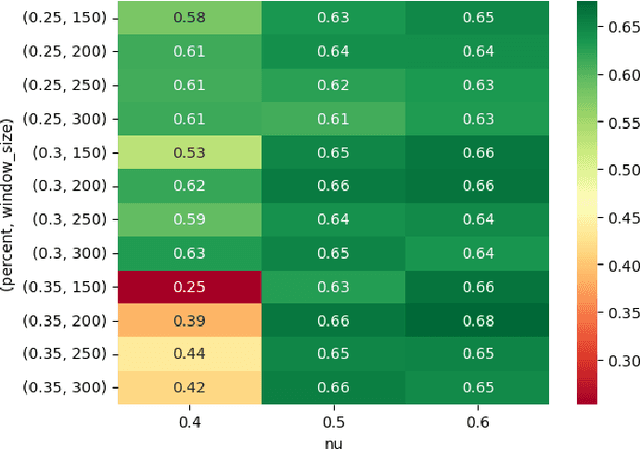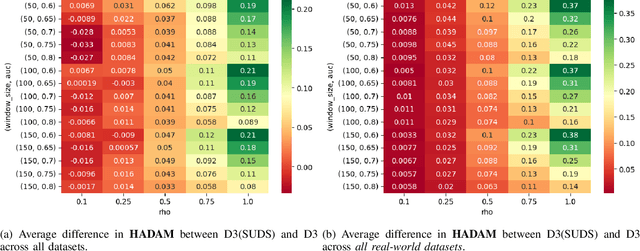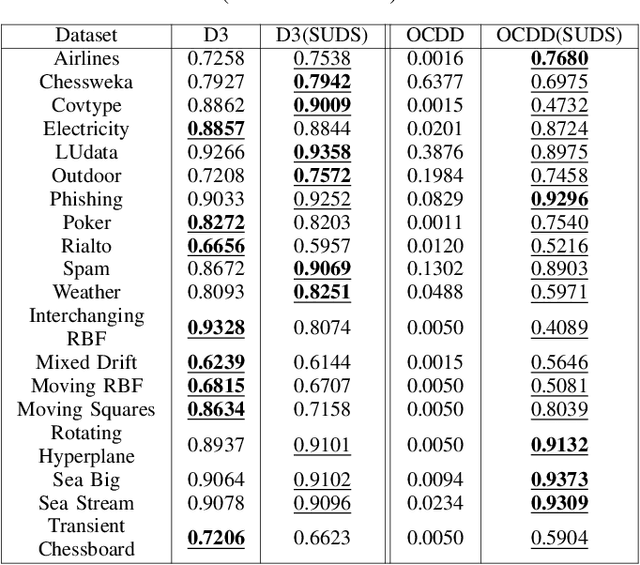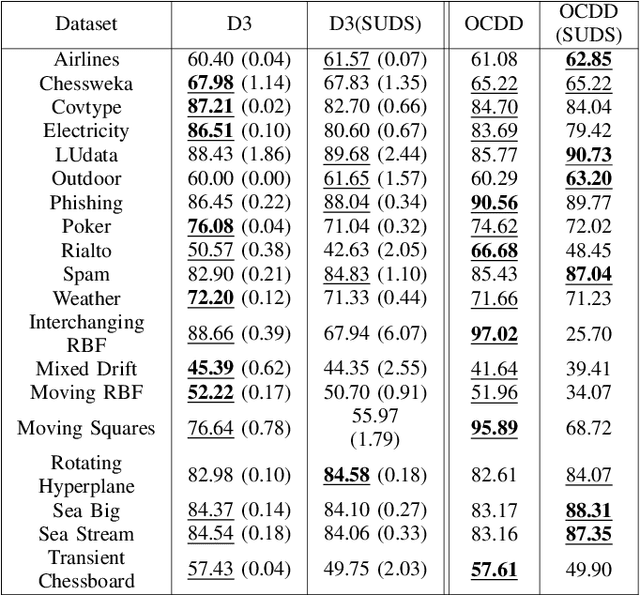Michael Granitzer
Compressed Concatenation of Small Embedding Models
Oct 06, 2025Abstract:Embedding models are central to dense retrieval, semantic search, and recommendation systems, but their size often makes them impractical to deploy in resource-constrained environments such as browsers or edge devices. While smaller embedding models offer practical advantages, they typically underperform compared to their larger counterparts. To bridge this gap, we demonstrate that concatenating the raw embedding vectors of multiple small models can outperform a single larger baseline on standard retrieval benchmarks. To overcome the resulting high dimensionality of naive concatenation, we introduce a lightweight unified decoder trained with a Matryoshka Representation Learning (MRL) loss. This decoder maps the high-dimensional joint representation to a low-dimensional space, preserving most of the original performance without fine-tuning the base models. We also show that while concatenating more base models yields diminishing gains, the robustness of the decoder's representation under compression and quantization improves. Our experiments show that, on a subset of MTEB retrieval tasks, our concat-encode-quantize pipeline recovers 89\% of the original performance with a 48x compression factor when the pipeline is applied to a concatenation of four small embedding models.
Bridging the Semantic Gap in Virtual Machine Introspection and Forensic Memory Analysis
Mar 07, 2025



Abstract:Forensic Memory Analysis (FMA) and Virtual Machine Introspection (VMI) are critical tools for security in a virtualization-based approach. VMI and FMA involves using digital forensic methods to extract information from the system to identify and explain security incidents. A key challenge in both FMA and VMI is the "Semantic Gap", which is the difficulty of interpreting raw memory data without specialized tools and expertise. In this work, we investigate how a priori knowledge, metadata and engineered features can aid VMI and FMA, leveraging machine learning to automate information extraction and reduce the workload of forensic investigators. We choose OpenSSH as our use case to test different methods to extract high level structures. We also test our method on complete physical memory dumps to showcase the effectiveness of the engineered features. Our features range from basic statistical features to advanced graph-based representations using malloc headers and pointer translations. The training and testing are carried out on public datasets that we compare against already recognized baseline methods. We show that using metadata, we can improve the performance of the algorithm when there is very little training data and also quantify how having more data results in better generalization performance. The final contribution is an open dataset of physical memory dumps, totalling more than 1 TB of different memory state, software environments, main memory capacities and operating system versions. Our methods show that having more metadata boosts performance with all methods obtaining an F1-Score of over 80%. Our research underscores the possibility of using feature engineering and machine learning techniques to bridge the semantic gap.
WebFAQ: A Multilingual Collection of Natural Q&A Datasets for Dense Retrieval
Feb 28, 2025



Abstract:We present WebFAQ, a large-scale collection of open-domain question answering datasets derived from FAQ-style schema.org annotations. In total, the data collection consists of 96 million natural question-answer (QA) pairs across 75 languages, including 47 million (49%) non-English samples. WebFAQ further serves as the foundation for 20 monolingual retrieval benchmarks with a total size of 11.2 million QA pairs (5.9 million non-English). These datasets are carefully curated through refined filtering and near-duplicate detection, yielding high-quality resources for training and evaluating multilingual dense retrieval models. To empirically confirm WebFAQ's efficacy, we use the collected QAs to fine-tune an in-domain pretrained XLM-RoBERTa model. Through this process of dataset-specific fine-tuning, the model achieves significant retrieval performance gains, which generalize - beyond WebFAQ - to other multilingual retrieval benchmarks evaluated in zero-shot setting. Last but not least, we utilize WebFAQ to construct a set of QA-aligned bilingual corpora spanning over 1000 language pairs using state-of-the-art bitext mining and automated LLM-assessed translation evaluation. Due to our advanced, automated method of bitext dataset generation, the resulting bilingual corpora demonstrate higher translation quality compared to similar datasets. WebFAQ and all associated resources are publicly available on GitHub and HuggingFace.
Malware Detection based on API calls
Feb 18, 2025Abstract:Malware attacks pose a significant threat in today's interconnected digital landscape, causing billions of dollars in damages. Detecting and identifying families as early as possible provides an edge in protecting against such malware. We explore a lightweight, order-invariant approach to detecting and mitigating malware threats: analyzing API calls without regard to their sequence. We publish a public dataset of over three hundred thousand samples and their function call parameters for this task, annotated with labels indicating benign or malicious activity. The complete dataset is above 550GB uncompressed in size. We leverage machine learning algorithms, such as random forests, and conduct behavioral analysis by examining patterns and anomalies in API call sequences. By investigating how the function calls occur regardless of their order, we can identify discriminating features that can help us identify malware early on. The models we've developed are not only effective but also efficient. They are lightweight and can run on any machine with minimal performance overhead, while still achieving an impressive F1-Score of over 85\%. We also empirically show that we only need a subset of the function call sequence, specifically calls to the ntdll.dll library, to identify malware. Our research demonstrates the efficacy of this approach through empirical evaluations, underscoring its accuracy and scalability. The code is open source and available at Github along with the dataset on Zenodo.
On the Suitability of pre-trained foundational LLMs for Analysis in German Legal Education
Dec 20, 2024Abstract:We show that current open-source foundational LLMs possess instruction capability and German legal background knowledge that is sufficient for some legal analysis in an educational context. However, model capability breaks down in very specific tasks, such as the classification of "Gutachtenstil" appraisal style components, or with complex contexts, such as complete legal opinions. Even with extended context and effective prompting strategies, they cannot match the Bag-of-Words baseline. To combat this, we introduce a Retrieval Augmented Generation based prompt example selection method that substantially improves predictions in high data availability scenarios. We further evaluate the performance of pre-trained LLMs on two standard tasks for argument mining and automated essay scoring and find it to be more adequate. Throughout, pre-trained LLMs improve upon the baseline in scenarios with little or no labeled data with Chain-of-Thought prompting further helping in the zero-shot case.
Enhancing Rhetorical Figure Annotation: An Ontology-Based Web Application with RAG Integration
Dec 18, 2024



Abstract:Rhetorical figures play an important role in our communication. They are used to convey subtle, implicit meaning, or to emphasize statements. We notice them in hate speech, fake news, and propaganda. By improving the systems for computational detection of rhetorical figures, we can also improve tasks such as hate speech and fake news detection, sentiment analysis, opinion mining, or argument mining. Unfortunately, there is a lack of annotated data, as well as qualified annotators that would help us build large corpora to train machine learning models for the detection of rhetorical figures. The situation is particularly difficult in languages other than English, and for rhetorical figures other than metaphor, sarcasm, and irony. To overcome this issue, we develop a web application called "Find your Figure" that facilitates the identification and annotation of German rhetorical figures. The application is based on the German Rhetorical ontology GRhOOT which we have specially adapted for this purpose. In addition, we improve the user experience with Retrieval Augmented Generation (RAG). In this paper, we present the restructuring of the ontology, the development of the web application, and the built-in RAG pipeline. We also identify the optimal RAG settings for our application. Our approach is one of the first to practically use rhetorical ontologies in combination with RAG and shows promising results.
Krony-PT: GPT2 compressed with Kronecker Products
Dec 16, 2024Abstract:We introduce Krony-PT, a compression technique of GPT2 \citep{radford2019language} based on Kronecker Products. We specifically target the MLP layers of each transformer layer, and systematically compress the feed forward layer matrices to various degrees. We introduce a modified Van Loan decomposition to initialize the new factors, and also introduce a new pruning-based initialization trick. Our method compresses the original 124M parameter GPT2 to various smaller models, with 80M being the smallest, and 96M being the largest compressed model. Our 81M model variant outperforms distilgpt2 on next-token prediction on all standard language modeling datasets, and shows competitive scores or performs on par with other Kronecker Products based compressed models of GPT2 that are significantly higher in size.
SUDS: A Strategy for Unsupervised Drift Sampling
Nov 05, 2024



Abstract:Supervised machine learning often encounters concept drift, where the data distribution changes over time, degrading model performance. Existing drift detection methods focus on identifying these shifts but often overlook the challenge of acquiring labeled data for model retraining after a shift occurs. We present the Strategy for Drift Sampling (SUDS), a novel method that selects homogeneous samples for retraining using existing drift detection algorithms, thereby enhancing model adaptability to evolving data. SUDS seamlessly integrates with current drift detection techniques. We also introduce the Harmonized Annotated Data Accuracy Metric (HADAM), a metric that evaluates classifier performance in relation to the quantity of annotated data required to achieve the stated performance, thereby taking into account the difficulty of acquiring labeled data. Our contributions are twofold: SUDS combines drift detection with strategic sampling to improve the retraining process, and HADAM provides a metric that balances classifier performance with the amount of labeled data, ensuring efficient resource utilization. Empirical results demonstrate the efficacy of SUDS in optimizing labeled data use in dynamic environments, significantly improving the performance of machine learning applications in real-world scenarios. Our code is open source and available at https://github.com/cfellicious/SUDS/
Towards an Improved Metric for Evaluating Disentangled Representations
Oct 04, 2024Abstract:Disentangled representation learning plays a pivotal role in making representations controllable, interpretable and transferable. Despite its significance in the domain, the quest for reliable and consistent quantitative disentanglement metric remains a major challenge. This stems from the utilisation of diverse metrics measuring different properties and the potential bias introduced by their design. Our work undertakes a comprehensive examination of existing popular disentanglement evaluation metrics, comparing them in terms of measuring aspects of disentanglement (viz. Modularity, Compactness, and Explicitness), detecting the factor-code relationship, and describing the degree of disentanglement. We propose a new framework for quantifying disentanglement, introducing a metric entitled \emph{EDI}, that leverages the intuitive concept of \emph{exclusivity} and improved factor-code relationship to minimize ad-hoc decisions. An in-depth analysis reveals that EDI measures essential properties while offering more stability than existing metrics, advocating for its adoption as a standardised approach.
Mixture of Modular Experts: Distilling Knowledge from a Multilingual Teacher into Specialized Modular Language Models
Jul 28, 2024



Abstract:This research combines Knowledge Distillation (KD) and Mixture of Experts (MoE) to develop modular, efficient multilingual language models. Key objectives include evaluating adaptive versus fixed alpha methods in KD and comparing modular MoE architectures for handling multi-domain inputs and preventing catastrophic forgetting. KD compresses large language models (LLMs) into smaller, efficient models, while MoE enhances modularity with specialized tasks. Experiments showed similar performance for both KD methods, with marginal improvements from adaptive alpha. A combined loss approach provided more stable learning. The router, trained to classify input sequences into English, French, German, or Python, achieved 99.95% precision, recall, and F1 score, with Logistic Regression being the most effective classifier. Evaluations of modular MoE architectures revealed that Pre-trained Language Experts (PLE) and Joint Expert Embedding Training (JEET) performed similarly, while the MoE with Common Expert (MoE-CE) setup showed slightly lower performance. Including a common expert in MoE-CE improved its performance. Studies on catastrophic forgetting indicated that sequential training led to significant forgetting, while single-session training with balanced batches and the MoE approach mitigated this issue. The MoE architecture preserved knowledge across multiple languages effectively. The research contributes open-sourced resources including the dataset (https://zenodo.org/doi/10.5281/zenodo.12677631), a balanced dataset creation tool (https://github.com/padas-lab-de/multi-language-dataset-creator), and the research codebase (https://github.com/ModMaamari/mixture-modular-experts).
 Add to Chrome
Add to Chrome Add to Firefox
Add to Firefox Add to Edge
Add to Edge